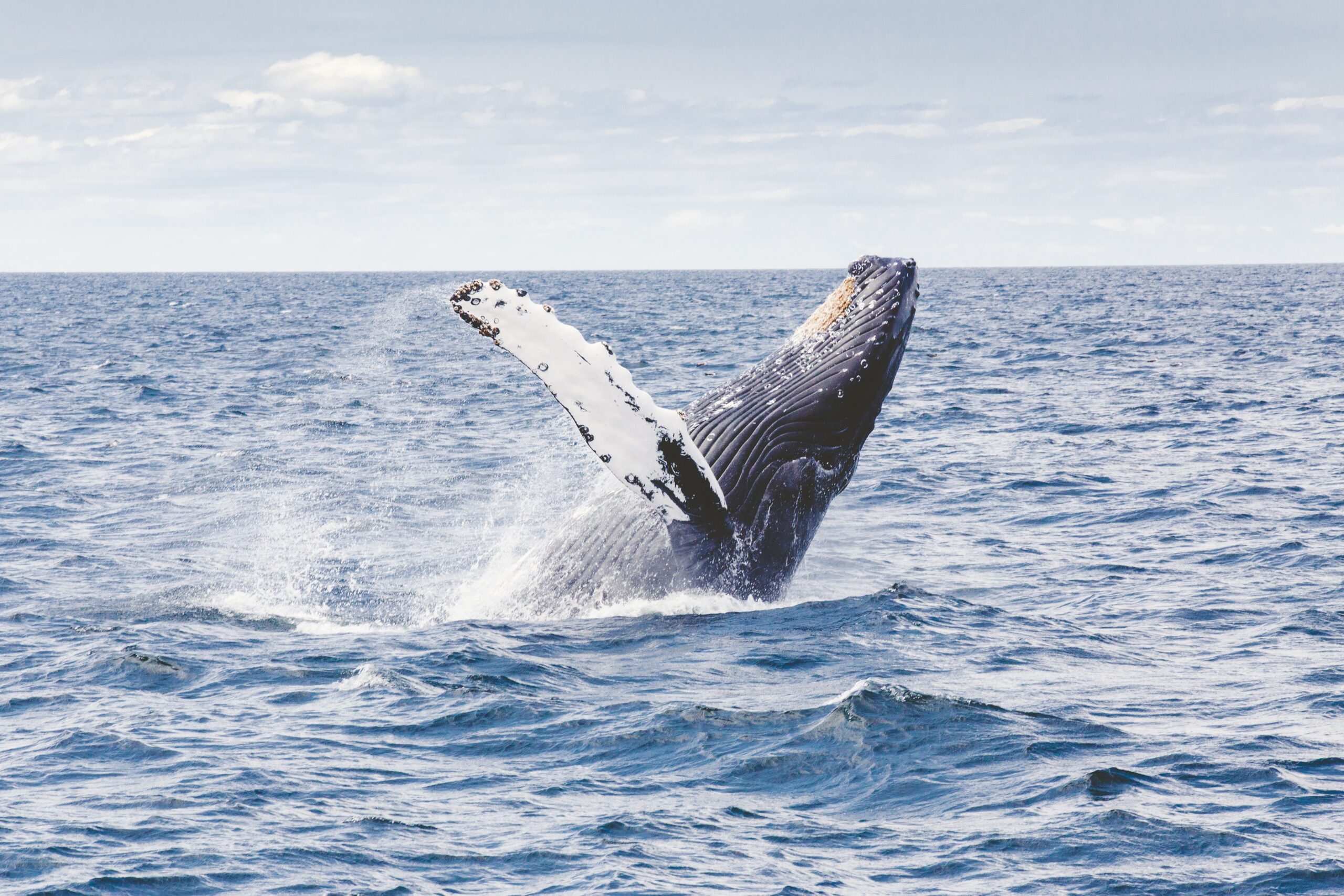
Following a court-approved agreement with Turtle Island Restoration Network, the federal government designated 302,961 square nautical miles in the Pacific Ocean as critical habitat for endangered humpback whales.
FOR IMMEDIATE RELEASE
October 8, 2019
| Contact: |
Catherine Kilduff, Center for Biological Diversity, (202) 780-8862, ckilduff@biologicaldiversity.org |
Federal Rule Proposed to Protect Pacific Humpback Whale Habitat
Endangered Whales Threatened by Fishing Gear, Ship Strikes, Oil Spills
SAN FRANCISCO— The federal government proposed a new rule today to designate 302,961 square nautical miles in the Pacific Ocean as critical habitat for three populations of endangered humpback whales. The move could help protect migrating whales from ship strikes, entanglement in fishing gear, and oil spills.
The announcement by the National Marine Fisheries Service follows a court-approved agreement with the Center for Biological Diversity, Turtle Island Restoration Network and Wishtoyo Foundation to issue new protections. The groups had sued the Trump administration for failing to protect two Pacific Ocean humpback populations listed as endangered and a third as threatened under the Endangered Species Act.
“Pacific humpback whales will be safer in their ocean home with these protections,” said Catherine Kilduff, a Center attorney. “Humpbacks delight whale watchers with their antics, but these playful animals are highly vulnerable to human activities in coastal waters. Identifying their critical habitat is an important way to protect them from speeding ships, oil spills and fishing gear.”
One population of endangered humpback whales that feeds off California’s coast contains fewer than 800 individuals, meaning that deaths or injuries from entanglement could hurt their recovery. At least 54 humpback whales were found tangled up in fishing gear off the West Coast in 2016. Entanglements cause injuries and death as the ropes cut into animals’ flesh, sap their strength and lead to drowning.
“As we have since time immemorial, the indigenous people of coastal California hold a sacred ancestral responsibility to care for our ocean relatives. Their well-being is deeply tied to our own,” said Alicia Cordero, First Nations program officer at Wishtoyo Foundation. “Ensuring the identification of humpback whale critical habitat is an essential step in meeting our cultural mandates and maintaining our traditional lifeways.”
The rule designates 48,459 square miles of critical habitat off the coast of California, Oregon and Washington for the humpback population that winters in Central America. The Mexico population got 175,812 square miles in the North Pacific Ocean, including Bristol Bay, Bering Sea and Gulf of Alaska — regions that also made up the 78,690 square miles listed for the Western North Pacific humpback population.
Ship strikes and oil spills are the other major threats to West Coast humpback whales. A study found that an estimated 22 humpback whales off California, Oregon and Washington die each year after being hit by ships. The Trump administration last year proposed to aggressively expand offshoreoil drilling in the Pacific, a plan temporarily suspendedearlier in 2019 until after next year’s presidential election.
“It is unfortunate that it took legal action against the Trump administration to secure protection for endangered humpback whales, but we are pleased to move forward with our efforts to create additional marine protected areas for threatened marine life,” said Todd Steiner, ecologist and executive director of Turtle Island Restoration Network.
Critical habitat protection will help safeguard ocean areas essential for migrating and feeding. The designation will ensure that federally permitted activities do not destroy or harm important whale habitat. Evidence shows that endangered or threatened species that have protected critical habitat are twice as likely to be recovering as those without it.
Humpback whale populations that need critical habitat were identified in 2016 by the National Marine Fisheries Service. Those include the threatened Mexico population that feeds off the U.S. West Coast and Alaska, the endangered Central America population that feeds almost exclusively off California and Oregon and the Western North Pacific population that feeds off the Aleutian Islands in Alaska.
Turtle Island Restoration Network is a global nonprofit whose mission is to inspire and mobilize people around the world to protect marine biodiversity and the oceans that sustain all life on Earth.




